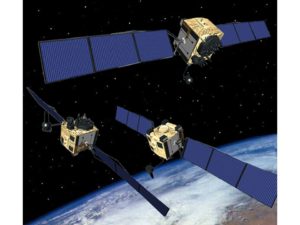
US Air Force
![]()
Editor’s Note – The authors make excellent points about the dominant importance of the “T” (time) in PNT (positioning, navigation and timing). Their suggestion for the military to dis-aggregate it and focus on time alone is an interesting idea for the military. It is a much more important idea for the civil sector, though, because of its impact on underlying infrastructure.
The U.S. military needs to get serious about assuring access to precision timing.
When people talk about the U.S. military’s dependence on positioning, navigation, and timing, or PNT, information, they’re usually thinking about GPS — more formally, the NAVSTAR Global Positioning System. And these days, they’re often concerned about the ways adversaries can disrupt GPS signals and thereby deny U.S. forces the positioning and navigation information that enables the “American Way of War.” But there’s another aspect of PNT that is getting short shrift: the T, for timing.
But did you realize that GPS actually only provides timing information? The positioning and navigation information that we associate with GPS is simply derived from these timing signals by receiver devices, and far more users depend on this Air Force maintained constellation for timing information alone.
According to the Department of Homeland Security, 11 of the 16 critical industries identified in Presidential Policy Directive 21 rely on precision timing. In the civilian world, these uses include communications, cellular phones, power distribution, finance, and information technology. Military capabilities that depend on precision timing include sensing, sensor fusion, datalinks, secure communications, electronic warfare, network operations, and command and control.
Yet the U.S. military organization responsible for PNT superiority is the Joint Navigation Warfare Center. The focus of much of the military’s training for contested, degraded, and operationally limited environments has been on identifying and mitigating the effects of GPS denial on positioning and navigation.

